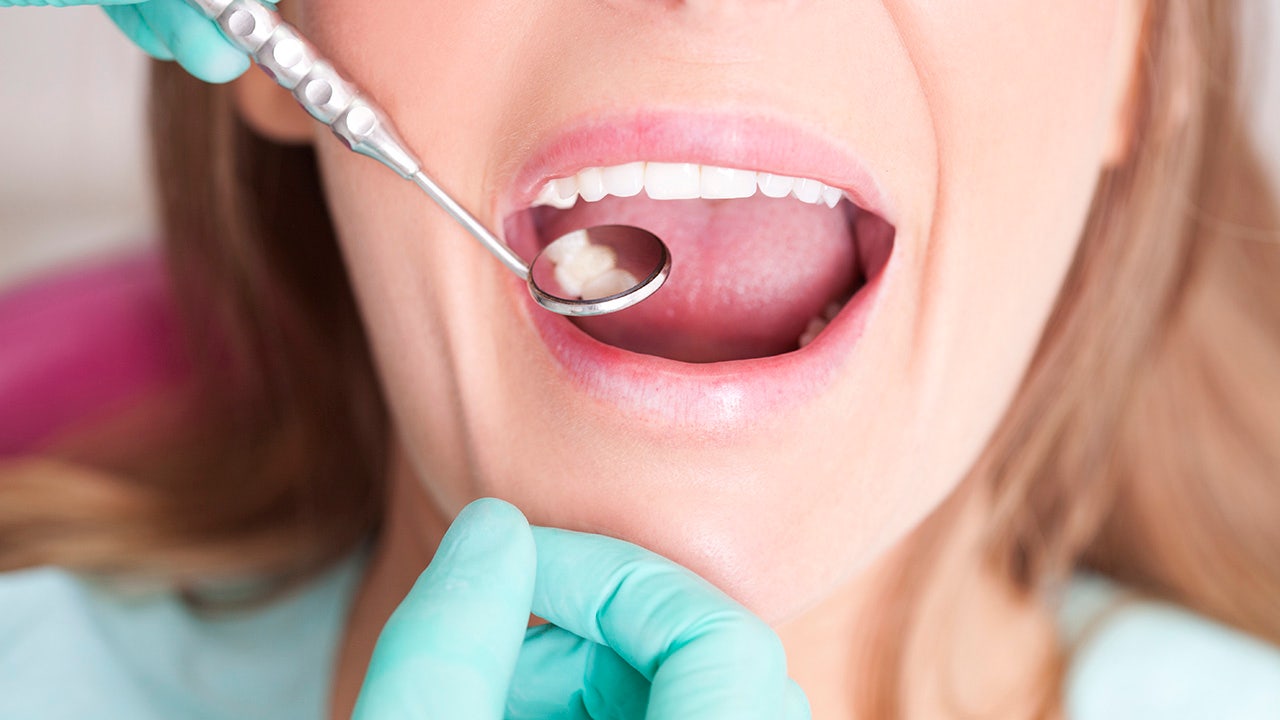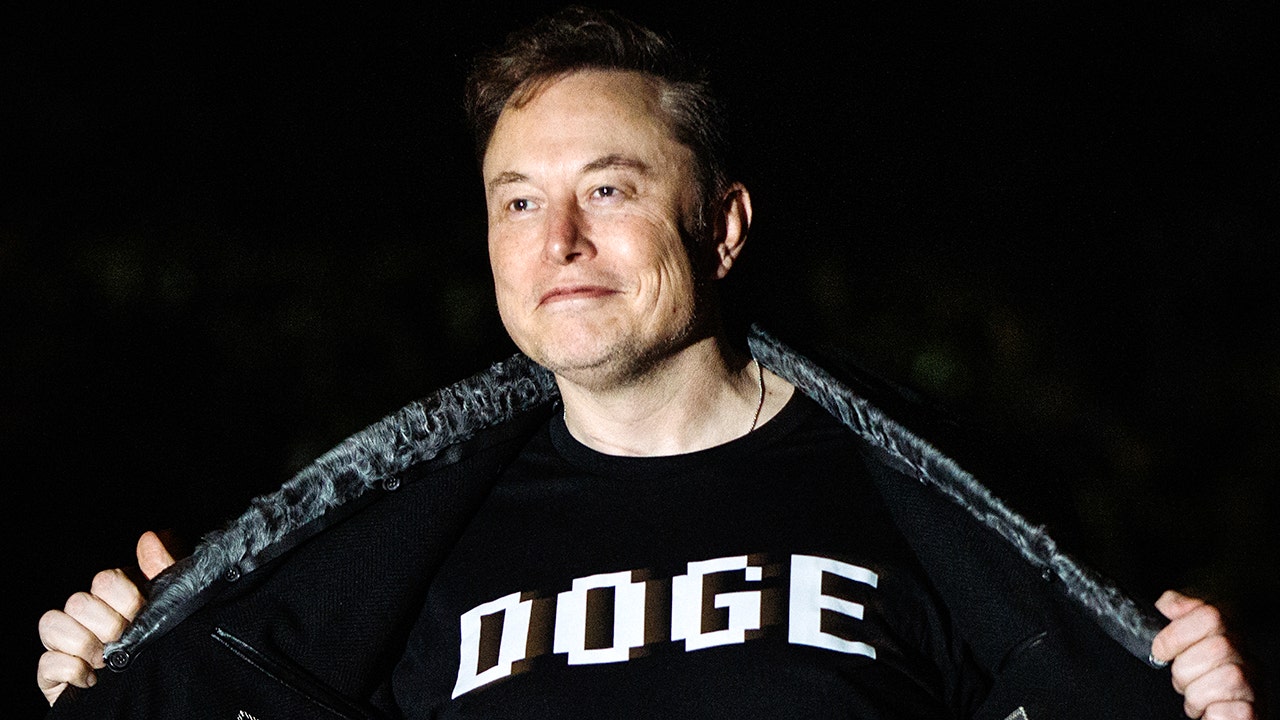Science
What Elmo — and his human friends — learned by asking Americans about their mental health

Remember when Elmo went viral in January by asking folks on the Internet how they were doing and briefly became the unofficial therapist of X?
“The world is burning, Elmo,” an X user who goes by Not the Bee told the usually upbeat “Sesame Street” character. “No amount of tickles can fix this.”
“This world is full of pain, anger, violence, disease, power grabbing despots and poverty,” a user with the handle LiveLifeLikeSomeoneLeftTheGateOpen added in a long post. “The chasm is widening as HG Wells put it, between the ‘haves’ and ‘have nots.’”
And those were just two of the 20,000-plus replies.
Christina Vittas, Elmo’s social media manager, was bowled over by the unexpected outpouring and told The Times she was thankful that the Muppet’s simple question “opened up conversations about the serious mental health crisis in our country.”
Six months later, Elmo’s creators at Sesame Workshop have collaborated with the Harris Poll to conduct a more thorough check-in on the state of Americans’ mental health. They conducted 2,012 online interviews in May on an array of topics with a nationally representative sample of Americans ages 16 and up.
The resulting State of Well-Being Report was released this week. Among the findings:
• 27% of respondents said their mental or emotional health, or that of someone in their family, was negatively impacting their well-being. That was essentially tied with the 28% who were negatively impacted by a problem with physical health. The only issue taking a greater toll on survey participants was economic security and personal finances, a worry reported by 41%.
• Mental and emotional health were a particular burden on teens, with 54% of the 16- and 17-year-olds who took the survey saying the psychological issues had a negative impact on their overall well-being. So did 32% of parents and 41% of people who identified as LGBTQ+.
• When asked about their top concerns for their future well-being, 90% cited their and their family’s mental and emotional health as either somewhat or very important. For the sake of comparison, 89% said the same about physical health, economic security and personal finances, and having “a safe place to call home.”
• 77% of people told pollsters that to improve the well-being of future generations, the U.S. should prioritize investments in emotional and mental health. That was only slightly less than the 80% who called for more investments in economic security and slightly more than the 76% who said the country should prioritize high-quality education and learning opportunities.
• 44% of all respondents said their families were “still experiencing negative effects from the COVID19 pandemic.” That includes 57% of Black Americans and 56% of Latino Americans who took the survey. It also includes 63% of respondents who are members of Gen Z (between the ages of 18 and 27) and 57% of those who are millennials (between the ages of 28 and 43).
• When presented with a list of adjectives to describe the average American adult, only 37% selected “kind,” 35% selected “compassionate” and 33% selected “empathetic.” However, 56% said this hypothetical adult was “anxious” and 44% said they were “difficult.”
• The survey found overwhelming support for the notion that kindness is essential to the well-being of society. Fully 91% of people agreed that “kindness fosters stronger bonds between people,” making them more empathetic and supportive.
• 82% of respondents said their own mental well-being would improve if kindness were more common, and 89% said a kinder society would be better for children.
• 93% of those surveyed said they had committed at least one act of kindness in the past three months. More specifically, 57% said they had helped a friend or family member in need, 57% said they listened to someone else in a nonjudgmental way, 39% gave money to charity, 35% helped a stranger and 22% volunteered their time in support of a cause, among other activities.
• Despite this outpouring of kindness, most people said they didn’t see much of the same in others, with 55% of respondents agreeing that “being kind is not a priority to most people.” In addition, 64% agreed that “most people don’t go out of their way to help others.”
• 73% of Americans said they wished they had learned more about how to manage their emotions when they were children. So did 84% of those who are parents.
• 67% of Americans also wish their parents had been more transparent about their own struggles with mental health. That was particularly true for younger Americans, with 77% of teens, 77% of Gen Zers and 78% of millennials sharing that sentiment.
Sesame Workshop described the report as “a first-of-its-kind index” and said it will continue to check in with Americans “to keep a pulse on the well-being of Americans and their families.”

Science
U.S. just radically changed its COVID vaccine recommendations: How will it affect you?

As promised, federal health officials have dropped longstanding recommendations that healthy children and healthy pregnant women should get the COVID-19 vaccines.
“The COVID-19 vaccine schedule is very clear. The vaccine is not recommended for pregnant women. The vaccine is not recommended for healthy children,” the U.S. Department of Health and Human Services said in a post on X on Friday.
In formal documents, health officials offer “no guidance” on whether pregnant women should get the vaccine, and ask that parents talk with a healthcare provider before getting the vaccine for their children.
The decision was done in a way that is still expected to require insurers to pay for COVID-19 vaccines for children should their parents still want the shots for them.
The new vaccine guidelines were posted to the website of the U.S. Centers for Disease Control and Prevention late Thursday.
The insurance question
It wasn’t immediately clear whether insurers will still be required under federal law to pay for vaccinations for pregnant women.
The Trump administration’s decision came amid criticism from officials at the nation’s leading organizations for pediatricians and obstetricians. Some doctors said there is no new evidence to support removing the recommendation that healthy pregnant women and healthy children should get the COVID vaccine.
“This situation continues to make things unclear and creates confusion for patients, providers and payers,” the American College of Obstetricians and Gynecologists said in a statement Friday.
Earlier in the week, the group’s president, Dr. Steven Fleischman, said the science hasn’t changed, and that the COVID-19 vaccine is safe during pregnancy, and protects both the mom-to-be and their infants after birth.
“It is very clear that COVID-19 infection during pregnancy can be catastrophic,” Fleischman said in a statement.
Dr. Susan Kressly, president of the American Academy of Pediatrics, criticized the recommendation change as being rolled out in a “conflicting, confusing” manner, with “no explanation of the evidence used to reach their conclusions.”
“For many families, the COVID vaccine will remain an important way they protect their child and family from this disease and its complications, including long COVID,” Kressly said in a statement.
Some experts said the Trump administration should have waited to hear recommendations from a committee of doctors and scientists that typically advises the U.S. Centers for Disease Control and Prevention on immunization recommendations, which is set to meet in late June.
California’s view
The California Department of Public Health on Thursday said it supported the longstanding recommendation that “COVID-19 vaccines be available for all persons aged 6 months and older who wish to be vaccinated.”
The changes come as the CDC has faced an exodus of senior leaders and has lacked an acting director. Typically, as was the case during the first Trump administration and in the Biden administration, it is the CDC director who makes final decisions on vaccine recommendations. The CDC director has traditionally accepted the consensus viewpoint of the CDC’s panel of doctors and scientists serving on the Advisory Committee on Immunization Practices.
Even with the longstanding recommendations, vaccination rates were relatively low for children and pregnant women. As of late April, 13% of children, and 14.4% of pregnant women, had received the latest updated COVID-19 vaccine, according to the CDC. About 23% of adults overall received the updated vaccine, as did 27.8% of seniors age 65 and over.
The CDC estimates that since October, there have been 31,000 to 50,000 COVID deaths and between 270,000 and 430,000 COVID hospitalizations.
Here are some key points about the CDC’s decision:
New vaccination guidance for healthy children
Previously, the CDC’s guidance was simple: everyone ages 6 months and up should get an updated COVID vaccination. The most recent version was unveiled in September, and is officially known as the 2024-25 COVID-19 vaccine.
As of Thursday, the CDC, on its pediatric immunization schedule page, says that for healthy children — those age 6 months to 17 years — decisions about COVID vaccination should come from “shared clinical decision-making,” which is “informed by a decision process between the healthcare provider and the patient or parent/guardian.”
“Where the parent presents with a desire for their child to be vaccinated, children 6 months and older may receive COVID-19 vaccination, informed by the clinical judgment of a healthcare provider and personal preference and circumstances,” the CDC says.
The vaccine-skeptic secretary of Health and Human Services, Robert F. Kennedy Jr., contended in a video posted on Tuesday there was a “lack of any clinical data to support the repeat booster strategy in children.”
However, an earlier presentation by CDC staff said that, in general, getting an updated vaccine provides both children and adults additional protection from COVID-related emergency room and urgent care visits.
Dr. Peter Chin-Hong, a UC San Francisco infectious diseases expert, said he would have preferred the CDC retain its broader recommendation that everyone age 6 months and up get the updated vaccine.
“It’s simpler,” Chin-Hong said. He added there’s no new data out there that to him suggests children shouldn’t be getting the updated COVID vaccine.
A guideline that involves “shared decision-making,” Chin-Hong said, “is a very nebulous recommendation, and it doesn’t result in a lot of people getting vaccines.”
Kressly, of the American Academy of Pediatrics, said the shared clinical decision-making model is challenging to implement “because it lacks clear guidance for the conversations between a doctor and a family. Doctors and families need straightforward, evidence-based guidance, not vague, impractical frameworks.”
Some experts had been worried that the CDC would make a decision that would’ve ended the federal requirement that insurers cover the cost of COVID-19 vaccines for children. The out-of-pocket cost for a COVID-19 vaccine can reach around $200.
New vaccine guidance for pregnant women
In its adult immunization schedule for people who have medical conditions, the CDC now says it has “no guidance” on whether pregnant women should get the COVID-19 vaccine.
In his 58-second video on Tuesday, Kennedy did not explain why he thought pregnant women should not be recommended to get vaccinated against COVID-19.
Chin-Hong, of UCSF, called the decision to drop the vaccination recommendation for pregnant women “100%” wrong.
Pregnancy brings with it a relatively compromised immune system. Pregnant women have “a high chance of getting infections, and they get more serious disease — including COVID,” Chin-Hong said.
A pregnant woman getting vaccinated also protects the newborn. “You really need the antibodies in the pregnant person to go across the placenta to protect the newborn,” Chin-Hong said.
It’s especially important, Chin-Hong and others say, because infants under 6 months of age can’t be vaccinated against COVID-19, and they have as high a risk of severe complications as do seniors age 65 and over.
Not the worst-case scenario for vaccine proponents
Earlier in the week, some experts worried the new rules would allow insurers to stop covering the cost of the COVID vaccine for healthy children.
Their worries were sparked by the video message on Tuesday, in which Kennedy said that “the COVID vaccine for healthy children and healthy pregnant women has been removed from the CDC recommended immunization schedule.”
By late Thursday, the CDC came out with its formal decision — the agency dropped the recommendation for healthy children, but still left the shot on the pediatric immunization schedule.
Leaving the COVID-19 vaccine on the immunization schedule “means the vaccine will be covered by insurance” for healthy children, the American Academy of Pediatrics said in a statement.
How pharmacies and insurers are responding
There are some questions that don’t have immediate answers. Will some vaccine providers start requiring doctor’s notes in order for healthy children and healthy pregnant women to get vaccinated? Will it be harder for children and pregnant women to get vaccinated at a pharmacy?
In a statement, CVS Pharmacy said it “follows federal guidance and state law regarding vaccine administration and are monitoring any changes that the government may make regarding vaccine eligibility.” The insurer Aetna, which is owned by CVS, is also monitoring any changes federal officials make to COVID-19 vaccine eligibility “and will evaluate whether coverage adjustments are needed.”
Blue Shield of California said it will not change its practices on covering COVID-19 vaccines.
“Despite the recent federal policy change on COVID-19 vaccinations for healthy children and pregnant women, Blue Shield of California will continue to cover COVID-19 vaccines for all eligible members,” the insurer said in a statement. “The decision on whether to receive a COVID-19 vaccine is between our member and their provider. Blue Shield does not require prior authorization for COVID-19 vaccines.”
Under California law, health plans regulated by the state Department of Managed Health Care must cover COVID-19 vaccines without requiring prior authorization, the agency said Friday. “If consumers access these services from a provider in their health plan’s network, they will not need to pay anything for these services,” the statement said.
Science
Want to understand CalRecycle's chemical recycling rules? You'll need to pay

Sacramento — Want to know what constitutes an acceptable form of recycling in California under CalRecycle’s new draft guidelines for the state’s landmark plastic waste law?
It’ll cost you roughly $187, and even then you may not find your answer.
The issue arose this week when CalRecycle held a Sacramento workshop on its proposed regulations to implement Senate Bill 54, the 2022 law designed to reduce California’s single-use plastic waste.
In the regulations’ latest iteration, the agency declared that it will only consider recycling technologies that follow standards issued by the International Organization for Standardization, or ISO, the Geneva-based group that sets standards for a variety of industries, including healthcare and transportation.
According to the draft regulations: “A facility’s use of a technology that is not a mechanical recycling technology … shall not be considered recycling unless the facility operates in a manner consistent with ISO 59014:2024.”
To access ISO 59014:2024, one must purchase the report for about $187.
That’s not fair, said Nick Lapis, director of advocacy for Californians Against Waste. “Copies of those ISO standards should be publicly available,” he said.
Lapis and others also noted that the law, as written, expressly prohibits chemical and nonmechanical forms of recycling.
Officials at CalRecycle, also known as the California Department of Resources Recycling and Recovery, didn’t respond to the criticism or to questions from The Times.
ISO 59014:2024 turns out to be a 38-page report titled “Environmental management and circular economy — Sustainability and traceability of the recovery of secondary materials — Principles, requirements and guidance.”
A copy of the report reviewed by The Times offered no specifics on recycling technologies, or information about the operation of a recycling plant.
The word “recycling” is only used five times in the “Annex,” a 13-page supplementary section of the report. And there it is mentioned only in the context of establishing definitions or examples of “organizations engaged in the recovery of secondary materials” or “collection system types.”
For instance, “Commercial waste and recycling companies” are listed as examples of a type of organization that collects waste. Other waste collectors, according to the report, include municipalities, retailers and reuse organizations such as nonprofit reuse operators.
“The draft calls on aligning facilities with this ISO standard,” said Monica Wilson, senior director of global programs at the Global Alliance for Incinerator Alternatives. “That ISO standard is not about recycling. It’s not about chemical recycling, it’s just not an appropriate comparison for us to be referring to.”
Lapis also found the report hard to decipher.
“Maybe I should go back and look at it again, but it’d be helpful if you’re citing ISO standards … that you identify what parts” are being cited, he said.
Karen Kayfetz, chief of CalRecycle’s Product Stewardship branch, didn’t respond to questions or concerns about the inclusion of a report that is not freely available to the public to review.
During this week’s workshop, she said the agency’s use of the ISO standard “is not meant … to be a measure of whether you are recycling, but rather just one of multiple criteria that an entity needs to be measured against.”
She said the SB 54 statute requires that CalRecycle exclude recycling technologies that produce significant amounts of hazardous waste and tasks the agency with considering environmental and public health impacts of these technologies.
“The ISO standard for the operation of facilities does address some of the best practices that would help to ameliorate and measure those impacts. … It is meant to be one of multiple criteria that can be utilized as a measure and to help set a floor but not a ceiling,” she said.
Anna Ferrera, a spokeswoman for the Wine Institute, which represents more than 1,000 wineries and affiliates across the state, was among those with no complaints about the proposed new regulations.
“We believe it incorporates common-sense changes that would reduce costs and ensure that products are appropriately recycled,” Ferrera said.
Tina Andolina, the chief of staff for state Sen. Ben Allen (D-Santa Monica), SB 54’s author, said the inclusion of the report and other items in the draft regulations suggests that CalRecycle is considering how to manage these polluting technologies — instead of forbidding them, as the law requires.
“The regulations unlawfully shift the standard from the production of hazardous waste as required by the statute to its management,” she said, reading from a letter Allen had written to the staff.
Anja Brandon, director of plastic policy at the Ocean Conservancy, added that along with not being freely available, the ISO standard “does not satisfy SB 54’s requirements to exclude the most hazardous technologies and to minimize the generation of hazardous waste and environmental, environmental justice and public health impacts.”
SB 54, which was signed by Gov. Gavin Newsom in 2022, requires that by 2032, 100% of single-use packaging and plastic food ware produced or sold in the state must be recyclable or compostable, that 65% of it can be recycled, and that the total volume is reduced by 25%.
The law was written to address the mounting issue of plastic pollution in the environment and the growing number of studies showing the ubiquity of microplastic pollution in the human body — such as in the brain, blood, heart tissue, testicles, lungs and various other organs.
Last March, after nearly three years of negotiations among various corporate, environmental, waste, recycling and health stakeholders, CalRecycle drafted a set of finalized regulations designed to implement the single-use plastic producer responsibility program under SB 54.
But as the deadline for implementation approached, industries that would be affected by the regulations including plastic producers and packaging companies — represented by the California Chamber of Commerce and the Circular Action Alliance — began lobbying the governor, complaining that the regulations were poorly developed and might ultimately increase costs for California taxpayers.
Newsom allowed the regulations to expire and told CalRecycle that it needed to start the process over.
These new draft regulations are the agency’s latest attempt at issuing guidelines by which the law can be implemented.
Science
A new COVID subvariant spreads rapidly as Trump pivots away from vaccines

A new, highly transmissible COVID subvariant has been detected in California — heightening the risk of a potential summer wave as recent moves by the Trump administration threaten to make vaccines harder to get, and more expensive, for many Americans, some health experts warn.
Health and Human Services Secretary Robert F. Kennedy Jr. announced this week that he was rescinding the federal government’s recommendation that pregnant women and healthy children get immunized against COVID, effective immediately.
Dr. Marty Makary, commissioner of the U.S. Food and Drug Administration, also said the agency will no longer routinely approve annually formulated COVID-19 vaccinations for healthy people under age 65.
“We simply don’t know whether a healthy 52-year-old woman with a normal BMI who has had COVID-19 three times and has received six previous doses of a COVID-19 vaccine will benefit from the seventh dose,” Makary, along with another FDA official, Dr. Vinay Prasad, wrote in the New England Journal of Medicine this month. “This policy will compel much-needed evidence generation.”
However, some experts say mandating more extensive testing could delay vaccine access for many, as those efforts may not even be complete until after the end of the upcoming winter flu-and-COVID season.
“Pregnant women, infants and young children are at higher risk of hospitalization from COVID, and the safety of the COVID vaccine has been widely demonstrated,” Dr. Sean O’Leary, chair of the American Academy of Pediatrics’ Committee on Infectious Diseases, said in a statement.
The U.S. Centers for Disease Control and Prevention has said that, in general, getting an updated vaccine provides children and adults additional protection from COVID-related emergency room and urgent care visits.
The recent federal changes, according to some experts, could also prompt private insurance companies and government insurers to stop paying for COVID shots for wide segments of the population, including babies and children.
Absent a recommendation by federal officials, Americans could end up paying the entire cost of a vaccine, experts say. The out-of-pocket cost for a COVID vaccine at CVS, for instance, is $198.99.
Although the emergency phase of the pandemic has long since passed, authorities note COVID remains a public health concern. A relatively new subvariant has been spreading in Europe and Asia, “particularly Hong Kong, Taiwan, other countries, Japan, etc.,” said Dr. Peter Chin-Hong, a UC San Francisco infectious diseases expert.
That subvariant, NB.1.8.1, was first documented in January and has since been detected in California, including in Los Angeles County and the San Francisco Bay Area. The World Health Organization designated it a “Variant Under Monitoring” last week.
NB.1.8.1 has grown exponentially worldwide in recent weeks. The Omicron subvariant represented 10.7% of genetically analyzed viral samples worldwide for the week ending April 27, WHO data show. That was up sharply from the week ending April 6, when the subvariant accounted for 2.5% of samples worldwide.
“While still low numbers, this is a significant rise,” the WHO said, adding that there was a “concurrent increase in cases and hospitalizations in some countries where NB.1.8.1 is widespread.”
NB.1.8.1 isn’t yet prevalent enough in the United States to be publicly tracked by the CDC. Another strain, LP.8.1, accounted for an estimated 73% of coronavirus specimens nationally for the two-week period ending Saturday.
Data suggest NB.1.8.1 does not cause more severe illness, “but it is more transmissible, at least from what we’re seeing around the world and also from lab experiments,” said Dr. Yvonne Maldonado, an infectious-disease expert at Stanford University.
In Taiwan, a top health official told reporters that an NB.1.8.1-fueled outbreak was “continuing to rise rapidly, with a sustained increase in severe and fatal cases,” the Central News Agency reported, prompting a shortage of COVID testing kits. Health officials said a factor in Taiwan’s surge was the lack of a major COVID wave over the winter, and forecast that the island’s current spike may not peak for another four to six weeks.
NB.1.8.1 has seen increased prevalence in each of the three WHO regions that still consistently share genetic analysis of COVID samples — the Western Pacific (which includes East Asia, parts of Southeast Asia, and Australia); Europe; and the Americas.
The rate at which COVID tests are coming back positive in Los Angeles County has slightly increased over the past few weeks, although the overall positive rate remains low, at 3.5%, according to the county Department of Public Health. Coronavirus levels detected in the county’s wastewater have increased by 6% in the last three weeks, but also remain relatively low and are about one-eighth of the peak in the summer of last year.
Although California experienced a mild winter season — a first of the COVID era — that followed a powerful summer spike that was the strongest in years.
Many experts and officials have touted available COVID vaccines as effective both in warding off infection and in lessening the severity of symptoms. However, the need for otherwise healthy individuals to roll up their sleeves has been a matter of debate.
In a video message Tuesday on X, Kennedy — a noted vaccine skeptic — said that he “couldn’t be more pleased to announce that, as of today, the COVID vaccine for healthy children and healthy pregnant women has been removed from the CDC recommended immunization schedule.”
Experts said they could not recall a time when a political appointee circumvented a well-established process of making vaccine recommendations, which typically involves panels of scientists advising the FDA and CDC.
“It’s kind of chilling,” Chin-Hong said. “It’s out of step with the system we’ve learned to trust and follow.”
In a statement to The Times, the L.A. County Department of Public Health urged Kennedy to listen to experts in the field — including from the CDC’s Advisory Committee on Immunization Practices, which is scheduled to meet next month — “before decreasing access to any vaccine.”
As of Thursday, the CDC still had the long-standing vaccine recommendations on its website: Everyone ages 6 months and older should get the most recent COVID-19 vaccine, officially known as the 2024-25 version, which was introduced in September. The CDC also recommends seniors ages 65 and up get a second vaccine dose six months after their first.
In a statement, the California Department of Public Health said that it supports the current expansive recommendation for COVID vaccines, and that it “will continue to follow the federal conversation through this dynamic situation.”
“Staying up to date with COVID-19 vaccination can reduce the risk of disease, especially more severe cases that result in hospitalization or death,” the department added.
The Washington Post reported Wednesday that the CDC did not know of Kennedy’s directive until he posted it, and officials have been “scrambling to find out what it meant.”
Experts who spoke with The Times warned the practical effect of the edict — if it becomes official — could be far more costly vaccines for affected groups.
“If vaccines are not recommended by the CDC, insurance companies would NOT be required to cover the cost,” the L.A. County Department of Public Health said in a statement.
As a result, the vaccines may be less accessible to healthier people who still want them — perhaps because they live or work with elderly or other higher-risk people, they’ve had severe COVID illness before, or they want to protect themselves against the latest subvariant, the agency said.
If the FDA withholds a license for an updated COVID vaccination for younger, healthier adults, this group “would not be able to receive it unless their provider chooses to give it ‘off label,’” the county said.
When asked whether healthy pregnant women and healthy children can still get vaccinated at its pharmacies, Walgreens said its teams operate “in full compliance with applicable laws.” CVS said its locations “follow federal guidance regarding vaccine administration and are monitoring any changes that the government may make regarding vaccine eligibility.”
Kaiser Permanente Southern California said it was aware of potential changes, but noted no new formal guidance has yet been issued. As a result, Kaiser is continuing to follow existing guidance, which recommends the shots for everyone.
The L.A. County Department of Public Health said that as of Wednesday, “pregnant women and healthy children can get vaccinated for COVID-19,” according to existing recommendations from an advisory panel and the CDC.
Chin-Hong noted there were 150 pediatric deaths in the U.S. from COVID-19 in a recent one-year period. That’s in the same ballpark as the 231 pediatric flu deaths recorded this season, and federal health officials recommend everyone ages 6 months and older get an annual flu shot.
“Most people would agree that kids should be targeted for flu vaccines. It seems kind of weird to have COVID as an outlier in that respect,” Chin-Hong said.
In the video published this week, Makary said that “most countries in the world have stopped recommending the vaccine for children.”
Maldonado, however, said the U.S. doesn’t use other nations’ standards to dictate vaccine recommendations. The U.S., for instance, recommends other types of vaccines that have a lower prevalence than COVID that people want to get, Maldonado said, such as the meningococcal vaccine for children to guard against a serious bacterial disease that can infect the brain and spinal cord and cause death within hours.
The effect of a recommendation also varies by country. Canada, for instance, recommends updated COVID vaccines for seniors and other people who meet certain criteria, such as if they’re pregnant or are a healthcare worker. But the country’s universal healthcare system still allows everyone ages 6 months and older to get an updated COVID vaccine.
Although it’s true that children overall are at lower risk of developing severe COVID illness, those under 6 months of age “have the same risk of complications as the 65-year-old-plus population in this country,” said Stanford’s Maldonado, who also serves on the CDC’s Advisory Committee on Immunization Practices.
Among children eligible for vaccination, COVID-associated hospitalization rates are highest for those ages 6 months to 4 years, according to the CDC.
“So are children going to be the highest risk group? No, they’re not. But would you want to protect your child from a disease that could potentially put them in the hospital and get them on a ventilator? Yes, I would say that I would want to make that choice for myself. And why not allow the parent to make that choice?” Maldonado said.
The CDC says COVID vaccination during pregnancy builds antibodies that can help protect the baby; studies have also shown that vaccinated moms who breastfeed have protective antibodies in their milk, which could help protect their babies.
There have been an estimated 260,000 to 430,000 hospitalizations attributed to COVID since October, causing “an enormous burden on the healthcare system,” Dr. Fiona Havers, a medical epidemiologist with the CDC, said at a recent public meeting. There have also been an estimated 30,000 to 50,000 COVID-19 deaths over the same time period.
“It is a major cause of morbidity and mortality, particularly in older adults, but it does affect other people, particularly those with underlying conditions, in younger age groups.”
COVID is also a major cause of pediatric hospitalizations, even among otherwise healthy children, she said.
“If there’s a summer wave this year, we’ll be seeing it in children being hospitalized with COVID as well,” she said.
-

 Education1 week ago
Education1 week agoVideo: Columbia University President Is Booed at Commencement Ceremony
-

 News1 week ago
News1 week agoRead the Full ‘Make America Healthy Again’ Report
-

 Culture1 week ago
Culture1 week agoHow Manga Megastar Junji Ito Makes Terrifying Series Like ‘Uzumaki’
-

 Technology1 week ago
Technology1 week agoNow you can watch the Internet Archive preserve documents in real time
-

 Technology1 week ago
Technology1 week agoDiscord might use AI to help you catch up on conversations
-

 News1 week ago
News1 week agoVideo: Trump Repeats False Claims to South African President
-

 Science1 week ago
Science1 week agoTrump Has Cut Science Funding to Its Lowest Level in Decades
-

 World1 week ago
World1 week agoNeo-Nazi cult leader extradited to US for plot to kill Jewish children













